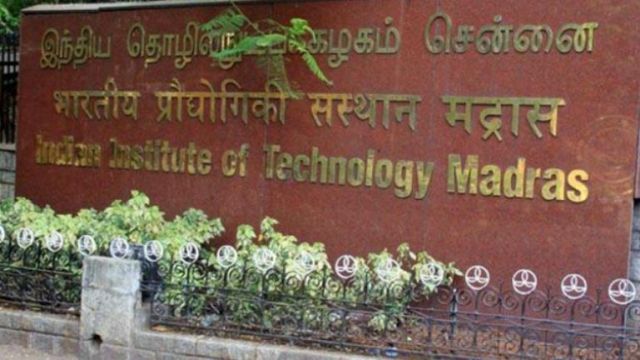
by admin | May 25, 2021 | Markets, Technology
 Mumbai : There has been a spurt in the adoption of Artificial Intelligence (AI) across industries in India and cloud infrastructure and rapid deployment of intelligent Cloud services will further drive AI adoption in the country, Microsoft India said on Wednesday.
Mumbai : There has been a spurt in the adoption of Artificial Intelligence (AI) across industries in India and cloud infrastructure and rapid deployment of intelligent Cloud services will further drive AI adoption in the country, Microsoft India said on Wednesday.
In a white paper titled “Age of Intelligence,” Microsoft said the focus is to create modern mobile infrastructure, skill up the workforce and reduce data costs and cross-industry collaboration, thus extending information connectivity and digital services to the underserved segments of the population.
“Our ambition is to enable a human-centered approach to AI. India is currently at an inflection point in the adoption of AI,” said Anant Maheshwari, President, Microsoft India as the company unveiled the white paper at the Nasscom Technology and Leadership Forum (NTLF) 2019 here.
“Building on the four foundational pillars — enabling digital transformation across industries, forging coalitions for innovation, building a future-ready workforce and creating sustained societal impact — will unlock and accelerate the potential of AI,” Maheshwari added.
The white paper outlines challenges and opportunities with respect to AI and how balanced and forward looking government policies, technological advancements including growing Internet penetration and connectivity will help reap benefits of digital transformation in the years to come.
According to Microsoft, the company is busy democratising AI and is making the technology available on Azure Cloud to empower developers and institutions in solving difficult problems.
“AI enables organizations to make better informed decisions by making it easy to derive insights from data, helping them expand and improve customer engagement and experiences, optimize operations and improve offerings,” read the white paper.
India is digitally ready for a comprehensive AI framework aligned to industries’ long-term strategy.
“With the size of the market and opportunity for growth, it’s imperative to implement AI for India that brings economic, societal and inclusive growth,” Microsoft noted.
—IANS

by admin | May 25, 2021 | Entrepreneurship, Markets, News, Startup Basics, Technology
 Chennai : The Indian Institute of Technology Madras (IIT-M) on Friday launched a start-up to prepare the workforce for the advent of the Artificial Intelligence (AI) age by training students at nominal costs.
Chennai : The Indian Institute of Technology Madras (IIT-M) on Friday launched a start-up to prepare the workforce for the advent of the Artificial Intelligence (AI) age by training students at nominal costs.
The start-up “PadhAI” offers an affordable hands-on course on ‘Deep Learning’ which is the most successful sub-field of AI.
It is open to all students, faculty and professionals with a basic background in mathematics and Python.
The fee for students and faculty is Rs 1,000 and for working professionals Rs 5,000.
The start-up will also create AI-driven apps by collaborating with Small and Medium Enterprises and the industry and generate value for the Indian economy.
“The Indian IT industry has gone through several waves of technology and survived by upskilling. The current wave of AI is very different. It requires both mathematical insight and hands-on experience,” Mitesh Khapra, Assistant Professor at IIT-Madras, said in a statement.
“We need courses that strike the right balance between these two. Only then will India be able to produce visible products and services in the AI age,” he added.
Every year, the top performing students from courses on PadhAI will be invited to a summer garage — an AI residency programme at IIT-M Research Park where they can work on research, tackle problems of societal impact, or find solutions to commercial value.
The four-month course comprises 80 hours of lecture content and requires equivalent time in solving assignments. It will involve monthly contests and a capstone challenge that trains participants to build an app that works like Google Lens for a few Indian languages.
The course will begin from February 1. Registrations for the course are open until January 24.
—IANS

by admin | May 25, 2021 | Branding, Business, Emerging Businesses, Finding Customers, Markets, Online Marketing, Sales, SMEs, Social Media, Technology
 By Gokul Bhagabati,
By Gokul Bhagabati,
Bengaluru : With a wide range of Machine Learning (ML) and Artificial Intelligence (AI) tools at its disposal, Amazon Web Services (AWS), the Cloud arm of online retail giant Amazon, is busy helping its customers in India, bringing to their doorsteps innovative solutions that address the challenges they face.
Amazon Internet Services Private Limited (AISPL), the Indian subsidiary of the Amazon Group that undertakes the resale and marketing of AWS Cloud services in India, brought to the country earlier this year a digital innovation programme headed by Madhusudan Shekar.
“In a heterogeneous country like India, the scope of innovation is tremendous,” Shekar, Head of Digital Innovation at AISPL, told IANS here, pointing out the diversity of needs in a country of over 1.2 billion people.
According to him, while start-ups are by nature quite innovative in their approach, the risk of inertia to innovation seeping in is higher in large enterprises.
“But large enterprises are always looking for innovations in areas such as optimising operational costs. We can help them find innovation solutions in these areas too,” Shekar noted in an interview on the sidelines of the Amazon AI Conclave held here last week.
“With the availability of a wide range of AI, ML, analytics and Internet of Things (IoT) tools and pre-trained models with AWS, the cost and time required for innovation come down drastically,” he explained, adding that businesses just need to fine-tune these models according to their needs, thereby saving time spent on building them from scratch.
Among the start-ups that showcased their innovative solutions at the event was ChironX, a Gurugram-based company which is using AI and Deep Learning for medical diagnostics.
The AI model that the company has built analyses retinal fundus images in seconds to detect several diseases, including diabetic retinopathy, hypertensive retinopathy, age-related macular degeneration and diabetic macular edema.
“Our solution is now used by several hospitals in India,” said Rito Maitra, Vice President for Product at ChironX, adding that its data infrastructure needs are supported by AWS.
AWS, which is betting big on AI and ML for its growth, has over hundreds and thousands of active customers in the country.
“Every customer conversation that we have today has an element of AI and ML in it — whether they are enterprises, start-ups or other organisations,” Navdeep Manaktala, Head of Business Development, AISPL, told IANS, adding that over 85 per cent of what AWS does is driven by customer needs.
AWS has a broad portfolio of AI and ML services in areas such as text-to speech conversion, image analysis and document analysis, among others.
Shaadi.com, one of the world’s largest online matrimonial services, and Woo, a dating app, are among the company’s two biggest customers from India that use Amazon “Rekognition” — a Deep Learning-based image-analysis service.
The matrimonial website believes that with the use of “Rekognition”, it could reduce the time it takes for a picture to appear on a user’s profile by 95 per cent as a lot of time spent on manual moderation of the picture to see whether it matches the description in the profile can be cut.
“Amazon Rekognition APIs (application programming interface), particularly ‘DetectFaces’, provide rich image metadata that we can use to apply our business-specific quality guidelines to. Utilising information such as number of faces, size of faces, and estimated age range, we were able to remove photo-level manual curation work entirely,” said Sumesh Menon, Co-Founder of Woo.
Manaktala said that ML is also helping AWS better understand the customer needs, helping them secure their data. “The pace of innovation, in spite of our size, is tremendous,” Manaktala added.
With services such as Amazon “SageMaker”, the company also allows developers and data scientists to build, train and deploy Machine Learning models.
It also has what is known as AWS Partner Network (APN), a global programme focused on helping APN Partners build successful businesses or solutions by providing business, technical, marketing and go-to-market support.
Overall, the company offers over 125 fully featured services for compute, storage, databases, networking, analytics, ML and AI, IoT, mobile, security, hybrid, virtual and augmented reality (VR and AR), media, and application development, deployment, and management.
(Gokul Bhagabati can be contacted at gokul.b@ians.in)
—IANS

by admin | May 25, 2021 | Markets, Opinions, Technology
 By Amit Kapoor,
By Amit Kapoor,
The world stands on the brink of the Fourth Industrial Revolution, powered by a wide range of new technology breakthroughs — Artificial Intelligence, Machine Learning, advanced robotics, Internet of Things, cloud computing and 3D printing — and the revolution is expected to result in major changes in the labour market globally by reducing the demand for middle-skilled workers doing repetitive tasks, and increasing the demand for more highly-skilled workers and also low-skilled workers doing non-routine work.
While many developed countries, such as the US, Japan and several European economies, are already experiencing this labour market polarisation, the market is also hollowing out in many developing countries — although at a rate slower than the developed world (World Development Report, 2016).
In India’s case, this polarisation can be seen in the organised manufacturing sector, where the share of high-skilled occupations in total manufacturing employment increased by more than three percentage points, while the share of middle-skilled jobs decreased by 6.3 percentage points from 1993-94 to 2011-12. Looking at the impact of technological progress on various manufacturing industries in India, capital-intensive industries — automobile manufacturing, for instance — have a greater probability of adopting advanced automation and robotic technologies, compared to the labor-intensive manufacturing industries such as textile, apparel, leather, and footwear, and paper manufacturers.
Further, in the services sector, particularly in the IT sector, e-commerce, banking and financial services and health care services, there is a huge potential for automation technologies, which would increase the demand for skilled workers and reduce the demand for middle-skilled workers.
However, in India, over 80 percent of the working population is engaged in low-skilled jobs in the unorganised sector. These workers aspire to join the middle-skilled workforce in the organised sector to raise themselves from poverty. However, the changing nature of work due to technology advancements in the organised sector prevents their upward mobility and any improvement in their incomes.
Addressing the challenges induced by technological advancements requires reforms in India’s higher education system. The institutes of higher learning should redesign the course curriculum by understanding the key market transitions amidst the technological advancements. This would enable the country to create a workforce which could be placed in the positions demanded by the companies in the digital era and thus bridge the skill gap in the labour market.
However, looking at the current state of higher education in India, one can perceive that it is not just the quality of the system which needs to be improved, there is also much to be done in terms of the number of students enrolled in institutes of higher learning and heterogeneity existing in access to higher education based on socio-economic status, gender and also region. The Gross Enrollment Ratio (GER) in tertiary education in India is 26.9 per cent, which is lower than that of China (48.4 per cent), Indonesia (27.9 per cent) and the Philippines (35.3 per cent), among others.
Further, the GER in India for the male population is 26.3 per cent and 25.4 per cent for females. The GER also varies across different social groups. For the Scheduled Castes it is 21.8 per cent and 15.9 percent for the Scheduled Tribes.
There are also wide variations in the number of colleges for higher education across different states in India, with the lowest number of seven colleges in Bihar for every 0.1 million of eligible population to 51 in Telangana and Karnataka. The top eight states in terms of highest number of colleges in India are Uttar Pradesh, Maharashtra, Karnataka, Rajasthan, Andhra Pradesh, Tamil Nadu, Gujarat, and Madhya Pradesh, which have 28 or more colleges per 0.1 million of the population.
The disparity in the distribution of the colleges is also seen across different districts in these states, with the top 50 districts having about 32.6 per cent of the colleges.
In addition to the inequalities existing in the access to institutions for higher education, another issue with the state of higher learning in India is that a majority of the students are enrolled in undergraduate programmes, compared to masters and the doctoral programmes. Moreover, at the undergraduate level, there is a low pass out rate of the students — of the 2,90,16,350 students enrolled, the number of pass outs have been 64,19,639 in 2017.
Given that the Indian system of higher education faces multiple challenges of low gross enrollment in its colleges and universities, with most students settling on undergraduate studies, along with various socio-economic inequalities existing in access to higher learning, it is imperative for the country to address these issues.
Further, emphasis must be given on increasing the number of students who pass out of colleges/universities, along with increasing enrollment numbers.
The technology-induced skill gap which the Indian economy is facing across its different sectors is bound to increase with the given higher education system. The change has to be brought from outside the existing constructs. Improvement in the teaching methodology from the traditional lecture courses, accreditation of online courses and redesigning the course curriculum to make it industry-relevant are some of the ways the technology-led changes in the labor market can be dealt with.
(Amit Kapoor is chair, Institute for Competitiveness, India. The views expressed are personal. He can be contacted at amit.kapoor@competitiveness.in and tweets @kautiliya. Deepti Mathur, senior researcher at large with Institute for Competitiveness, has contributed to the article)
—IANS

by admin | May 25, 2021 | Business Summit, Events, Markets, Muslim World, Social Round-up, Technology
 Manama : Bahrain is set to host the fourth edition of Bahrain Excellence Forum on October 24 and 25.
Manama : Bahrain is set to host the fourth edition of Bahrain Excellence Forum on October 24 and 25.
The event, which will be held under the patronage of Cabinet Affairs Minister Mohammed bin Ibrahim Al Mutawa, will cast light this year on artificial intelligence and its role in government excellence.
Act Smart Public Relations Consultancy will organize the forum in cooperation with the Artificial Intelligence Society in Bahrain.
The forum’s Assistant Secretary General Noura Al-Aliwi underlined the importance of artificial intelligence as one of the primary outputs of the industrial, informatics and technological revolutions.
She said artificial intelligence is likely to open the door for unlimited innovations, pointing out its use in numerous fields.
This, she added, might bring about a radical change in people’s lives due to the mammoth and fast-paced technological development and the global changes brought about by the fourth industrial revolution.
—AG/UNA-OIC

 Mumbai : There has been a spurt in the adoption of Artificial Intelligence (AI) across industries in India and cloud infrastructure and rapid deployment of intelligent Cloud services will further drive AI adoption in the country, Microsoft India said on Wednesday.
Mumbai : There has been a spurt in the adoption of Artificial Intelligence (AI) across industries in India and cloud infrastructure and rapid deployment of intelligent Cloud services will further drive AI adoption in the country, Microsoft India said on Wednesday.



